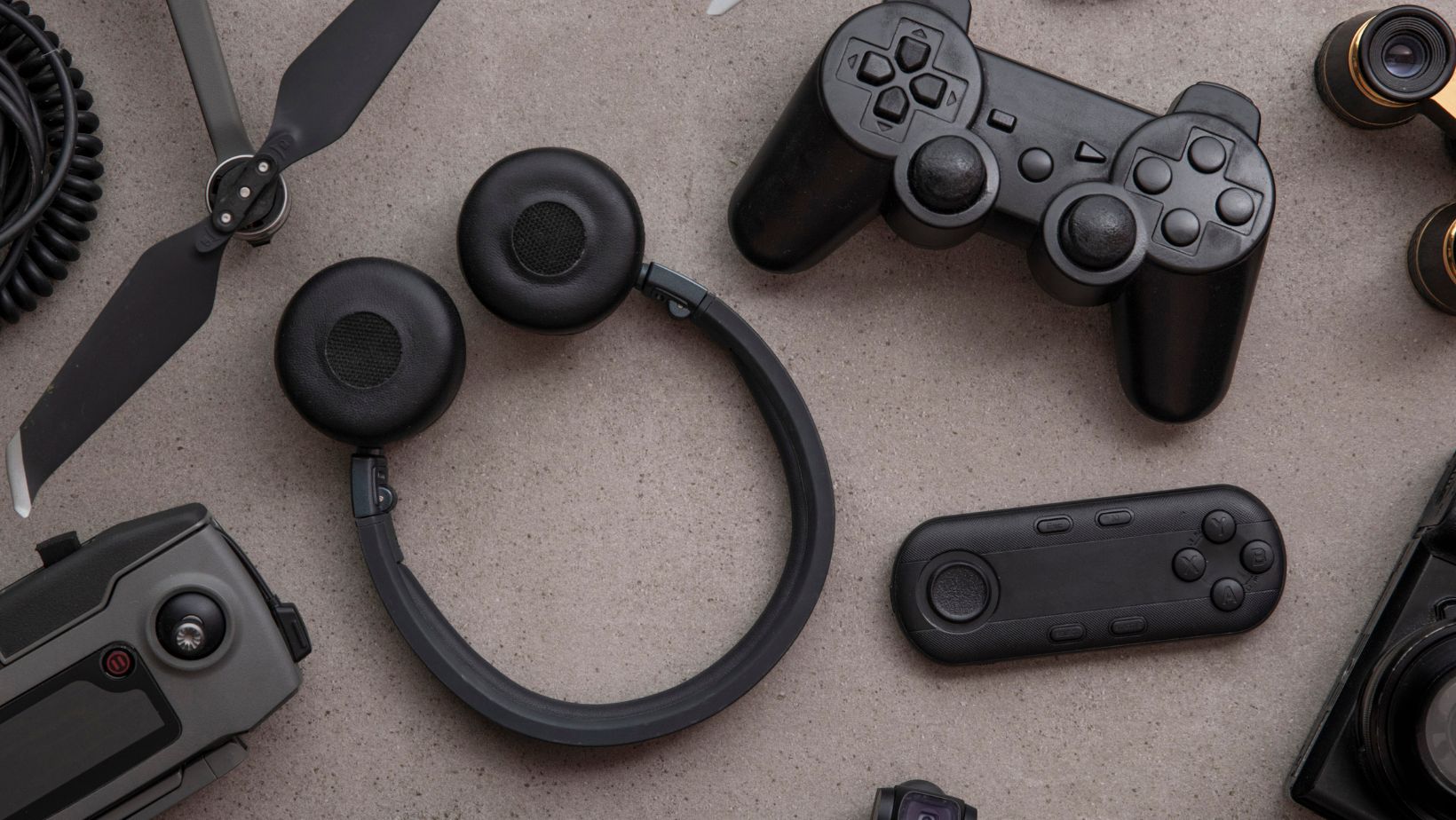Key Takeaways
- Rapid Technological Evolution: Gadget tech trends are driven by fast-paced advancements, particularly in smart home devices and wearables, enhancing consumer interactions with their environments.
- AI and IoT Integration: Artificial intelligence and the Internet of Things (IoT) are central to creating smarter, more personalized user experiences across devices, leading to increased convenience and efficiency.
- Health and Fitness Focus: Wearable technology, such as fitness trackers and smartwatches, is gaining popularity by providing real-time health data and promoting an active lifestyle.
- Sustainability Matters: Eco-friendly materials and energy-efficient innovations are becoming crucial for consumers, driving brands to adopt sustainable practices for a competitive edge in the market.
- Future Trends: Anticipated advancements include improved health monitoring in wearables, enhanced automation through robotics, and the integration of augmented and virtual reality, all driven by 5G connectivity.
- Consumer Awareness: Staying informed about gadget tech trends is essential for consumers and businesses to adapt to the evolving landscape and meet changing demands.
In a world where technology evolves at lightning speed, keeping up with the latest gadget trends can feel overwhelming. From smart home devices and gaming gear to wearable tech, innovations are reshaping how people interact with their environments and each other. This dynamic landscape not only enhances convenience but also sparks excitement about what’s next.
As consumers become more tech-savvy, they seek gadgets that blend functionality with style. The rise of artificial intelligence and the Internet of Things is driving this demand, pushing manufacturers to create smarter, more intuitive devices. Understanding these trends is essential for anyone looking to stay ahead in the ever-changing tech game.
Gadget Tech Trends
Gadget technology trends illustrate significant advancements shaping consumer experiences. Smart home devices represent a substantial shift, allowing users to control various functions remotely. Examples include smart thermostats, security cameras, and voice-activated assistants, all of which enhance convenience.
Wearable technology continues to gain traction, with fitness trackers and smartwatches leading the market. These devices provide real-time health data, promoting wellness and encouraging active lifestyles. Integration with mobile apps allows users to track their progress and set goals effectively.
Artificial intelligence plays a crucial role in personalizing gadget experiences. Voice recognition, facial recognition, and machine learning improve user interactions with devices. Smart assistants like Amazon’s Alexa and Google Assistant learn from user preferences, making daily tasks easier.
The Internet of Things (IoT) connects devices, enabling seamless communication. IoT ecosystems enhance home automation, where devices share data to optimize performance. For instance, smart refrigerators can track groceries and suggest recipes based on available ingredients.
Sustainability also influences gadget trends, with companies focusing on eco-friendly materials. Consumers increasingly prefer devices that minimize environmental impact, from energy-efficient appliances to biodegradable packaging. Brands that prioritize sustainability gain competitive advantages in the market.
Staying informed about these trends allows consumers and businesses to adapt and thrive in a rapidly evolving tech landscape.
Emerging Technologies in Gadgets
Emerging technologies significantly transform gadgets, enhancing functionality and user experience. Innovations like artificial intelligence and IoT connectivity lead the charge in modern consumer electronics.

Artificial Intelligence Integration
Artificial intelligence (AI) integration personalizes user experiences across devices. AI algorithms analyze user behavior, tailoring functionalities such as voice recognition and smart suggestions. For instance, smart speakers utilize AI to improve voice command accuracy, ensuring better interactions. AI-powered virtual assistants like Amazon Alexa and Google Assistant facilitate daily tasks, from setting reminders to controlling other gadgets. Machine learning enhances these systems, evolving capabilities based on usage patterns, effectively adapting to individual preferences.
IoT Connectivity
IoT connectivity revolutionizes how devices communicate within smart ecosystems. Gadgets equipped with IoT technology allow seamless interaction and automation. Smart home hubs connect devices such as lights, thermostats, and security cameras, enabling users to control environments remotely. For example, IoT-enabled thermostats learn user habits, adjusting temperatures for energy efficiency. The interconnected nature of IoT fosters convenience, reducing energy consumption and enhancing security measures. As more devices adopt IoT functionality, the demand for cohesive ecosystems will increase, providing users with integrated experiences.
Popular Gadget Categories
Gadget technology encompasses various categories, each evolving rapidly to meet consumer demands. The trend towards integration of advanced features enhances user convenience and engagement.
Wearable Technology
Wearable technology includes devices like fitness trackers, smartwatches, and smart glasses. These gadgets track health metrics such as heart rates, steps, and sleep patterns. They’ve gained popularity due to real-time health data. Many wearables integrate AI, offering personalized insights and recommendations. For instance, smartwatches allow notifications, music control, and contactless payments directly from the wrist.
Smart Home Devices
Smart home devices encompass products that automate household functions, improving convenience and efficiency. Items like smart thermostats, lights, and security cameras allow remote management through mobile applications. IoT connectivity enables these devices to communicate, enhancing the user experience as they work in tandem. For example, smart security systems can send alerts, monitor activity, and provide live feeds directly to smartphones.
Sustainability in Gadget Tech
Sustainability is increasingly integral to gadget technology, aligning with consumer demands for eco-friendly products. Innovations in materials and energy efficiency drive this trend.
Eco-Friendly Materials
Eco-friendly materials play a crucial role in sustainable gadget design. Many manufacturers now utilize recycled plastics, bamboo, and biodegradable materials in production. For example, companies like Fairphone focus on modular design, allowing consumers to repair and upgrade devices instead of discarding them. Additionally, brands like Dell incorporate recycled ocean plastics in their laptops, reducing waste and promoting marine conservation. By prioritizing sustainable sourcing, the tech industry reduces its environmental footprint while appealing to eco-conscious consumers.
Energy Efficiency Innovations
Energy efficiency innovations are also transforming gadget technology. Newer devices incorporate advanced energy-saving features that significantly reduce power consumption. Energy-efficient LED displays and low-power processors exemplify this trend, with some smart devices consuming up to 30% less energy compared to previous models. Certifications, such as Energy Star, identify products designed to save energy without sacrificing performance. Companies like Apple and Samsung are committed to achieving carbon neutrality in their supply chains, which further enhances their environmental credibility. Implementing these energy-efficient solutions not only lowers utility bills for consumers but also contributes to broader energy conservation efforts.
Future Predictions for Gadget Tech Trends
Predictions indicate that gadget technology will continue evolving rapidly, integrating AI and IoT even more deeply into daily lives. Consumers can expect enhanced personalization through smarter devices, with AI analyzing user habits to deliver tailored experiences.
Emerging smart home solutions will focus on improved energy efficiency, utilizing AI algorithms to optimize power consumption based on usage patterns. Users will gain access to data that informs energy-saving decisions and enhances automation capabilities within their homes.
Wearable technology is likely to evolve with advancements in health monitoring. Future wearables may include features such as continuous blood glucose monitoring or advanced stress detection, ultimately promoting proactive health management.
Companies will place greater emphasis on sustainable practices, pushing for innovations in biodegradable materials and enhanced recycling programs. Firms that prioritize sustainability are expected to capture a larger share of eco-conscious consumers.
Robotic automation is set to reshape gadget technology. Innovations in robotics will introduce new home assistants capable of performing various tasks, improving everyday convenience. These next-generation devices will see integration with existing smart home ecosystems.
Advancements in augmented reality (AR) and virtual reality (VR) will transform user experiences across multiple gadget categories. Consumers may experience interactive environments through wearable AR glasses, blending digital content seamlessly with the physical world.
5G technology will drastically improve device connectivity, enabling faster communication between gadgets. This advancement encourages the proliferation of connected devices and enhances the appeal of smart homes.
Dramatic improvements in battery technology will enhance device longevity and reduce charging frequency. Innovations such as solid-state batteries may emerge, providing safer, lighter, and longer-lasting power solutions.
The future of gadget tech trends points toward increased personalization, sustainability, automation, and connectivity, which collectively promise to create smarter, more efficient environments for consumers.
Innovation Continues to Drive Consumer Expectations
The landscape of gadget technology is rapidly transforming as innovation continues to drive consumer expectations. With a focus on personalization sustainability and enhanced connectivity the future promises smarter devices that seamlessly integrate into daily life. As AI and IoT evolve further they’ll create unique experiences tailored to individual needs while promoting energy efficiency and eco-friendly practices.
Consumers can look forward to a world where gadgets not only enhance convenience but also contribute positively to the environment. The ongoing advancements in battery technology augmented reality and robotic automation will redefine user interactions. Embracing these trends can lead to a more efficient and enjoyable tech-driven lifestyle.


